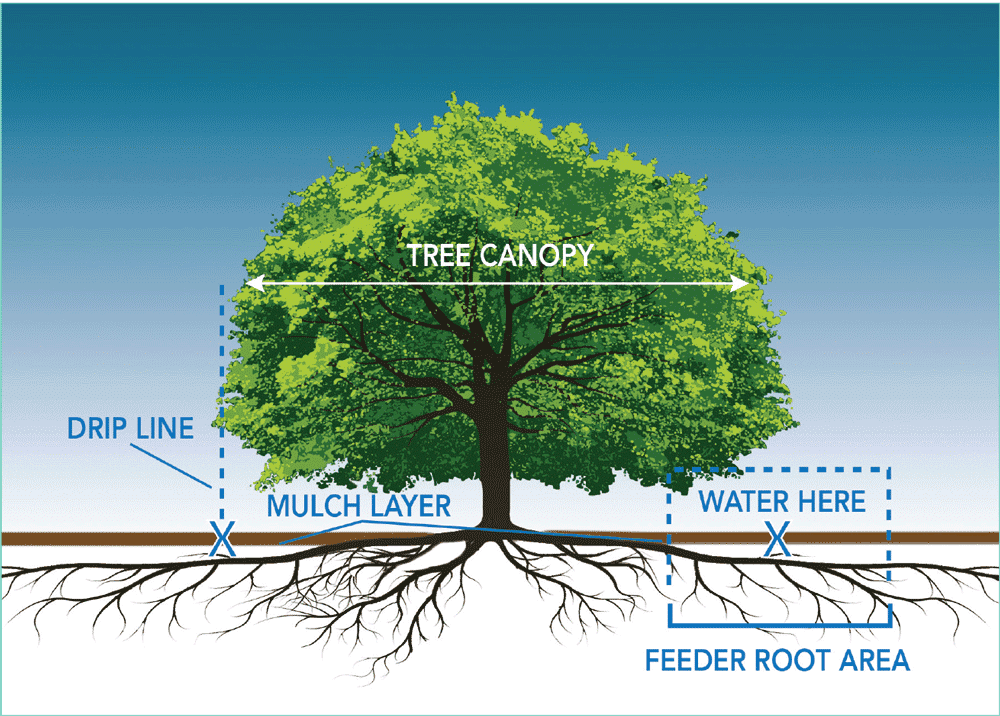Tree Trimming
4 Best Nutrient Needs for Healthy Trees


Hey there! Ever wondered what it takes to keep your trees healthy and thriving? Well, I’ve got you covered. In this article, I’ll be sharing the four best nutrient needs for your beloved trees.
From macronutrients to micronutrients, we’ll explore the essentials that ensure their vitality.
We’ll also dive into the importance of soil pH and how organic matter plays a role in nutrient uptake.
So, let’s embark on this journey to nurture our green companions together!
Macronutrients for Tree Health
I believe that macronutrients play a crucial role in maintaining the health of trees.
Macronutrients are essential elements that trees need in large quantities for their growth and development.


The three primary macronutrients required by trees are nitrogen (N), phosphorus (P), and potassium (K).
Nitrogen is essential for the production of chlorophyll, which is responsible for photosynthesis and overall tree vigor.
Phosphorus aids in the transfer of energy within the tree, promoting root development and fruiting.
Potassium regulates water movement in cells, improves disease resistance, and enhances overall tree health.
Without adequate levels of these macronutrients, trees may experience stunted growth, nutrient deficiencies, and increased susceptibility to pests and diseases.
Therefore, it’s vital to provide trees with the right balance of macronutrients to ensure their long-term health and vitality.
Micronutrients Essential for Trees
To ensure optimal tree health, trees require micronutrients in addition to macronutrients. Micronutrients are essential for the proper growth and development of trees. While they’re required in small quantities, they play a crucial role in various physiological processes.


Here are five important micronutrients that are essential for healthy trees:
- Iron (Fe): Iron is necessary for the synthesis of chlorophyll, which is responsible for photosynthesis. It also aids in enzyme activation and nitrogen fixation.
- Zinc (Zn): Zinc is involved in the synthesis of plant hormones, protein synthesis, and enzyme activation. It also plays a crucial role in seed development and root growth.
- Manganese (Mn): Manganese is essential for photosynthesis, enzyme activation, and nitrogen metabolism. It also aids in the synthesis of chlorophyll.
- Copper (Cu): Copper is involved in the synthesis of lignin, which provides structural support to the tree. It also plays a role in enzyme activation and carbohydrate metabolism.
- Boron (B): Boron is necessary for cell wall synthesis, pollen tube growth, and calcium uptake. It also aids in nitrogen metabolism and carbohydrate transport.
Ensuring that trees have an adequate supply of these micronutrients is crucial for their overall health and vitality.
Importance of Soil Ph for Tree Nutrition
Maintaining the appropriate soil pH is vital for optimal tree nutrition. Soil pH refers to the acidity or alkalinity of the soil and is measured on a scale from 0 to 14, with 7 being neutral. Different trees have different pH requirements, and it’s crucial to understand and meet these requirements for healthy growth.
When the soil pH is too high or too low, it affects the availability of essential nutrients to the tree roots. For example, acidic soil can limit the uptake of nutrients like phosphorus, calcium, and magnesium, while alkaline soil can reduce the availability of iron, manganese, and zinc. Therefore, monitoring and adjusting the soil pH to the appropriate range is necessary for trees to thrive and obtain the nutrients they need.
Transitioning into the subsequent section about ‘organic matter and tree nutrient uptake,’ let’s explore how organic matter can influence soil pH and nutrient availability.
Organic Matter and Tree Nutrient Uptake
Continuing the discussion from the previous subtopic, maintaining the appropriate soil pH is crucial for optimal tree nutrition, but organic matter also plays a significant role in tree nutrient uptake. Organic matter, such as compost or decomposed plant material, enhances soil structure and fertility, improving the overall health of the trees.
Here are five important points to understand about the relationship between organic matter and tree nutrient uptake:


- Organic matter increases the cation exchange capacity of the soil, allowing it to hold and release nutrients more effectively.
- Decomposed organic matter releases essential nutrients, such as nitrogen, phosphorus, and potassium, which are readily available for tree uptake.
- Organic matter promotes beneficial microbial activity in the soil, aiding in nutrient cycling and making nutrients more accessible to trees.
- It enhances water retention in the soil, preventing nutrient leaching and ensuring a steady supply of moisture to the trees.
- Organic matter also improves soil structure, allowing better root development and nutrient absorption.
Understanding the importance of organic matter in tree nutrient uptake is crucial for maintaining healthy and thriving trees.


Hello there! I’m Logan Foster, the green-thumbed social media marketer behind the vibrant world of 1800TreeGuy.com. With roots firmly planted in arboriculture, I’ve branched out to help clients cultivate their dream outdoor spaces, one leafy canopy at a time. My knack for nurturing nature is more than a profession—it’s a way of life.
When I’m not talking trees and teaching the art of arboreal care, you can find me cheering on the Bulldogs—my alma mater’s pride and my forever team. My environmental studies there didn’t just teach me about ecosystems; they instilled a lifelong passion for protecting our planet.
Off the clock, I’m an adventurer at heart. Whether it’s trekking the Appalachian trails, pedaling down a mountain path, or crafting guides to share the wonders of the wild, I’m happiest with soil under my nails and the sun on my face. And let’s not forget Yoda, my pug sidekick. He may not have mastered the art of stillness, but his joyful grins are my daily dose of happiness.
I’m all about making connections—between people and the great outdoors and between my clients and their ideal landscape visions. My approach is personal; every tree has a story, and every garden reflects its caretaker.
If you want to green your scene or share in my outdoor escapades, give me a shout on Instagram or Facebook. Let’s cultivate a conversation and grow a community rooted in a love for the lush life.







